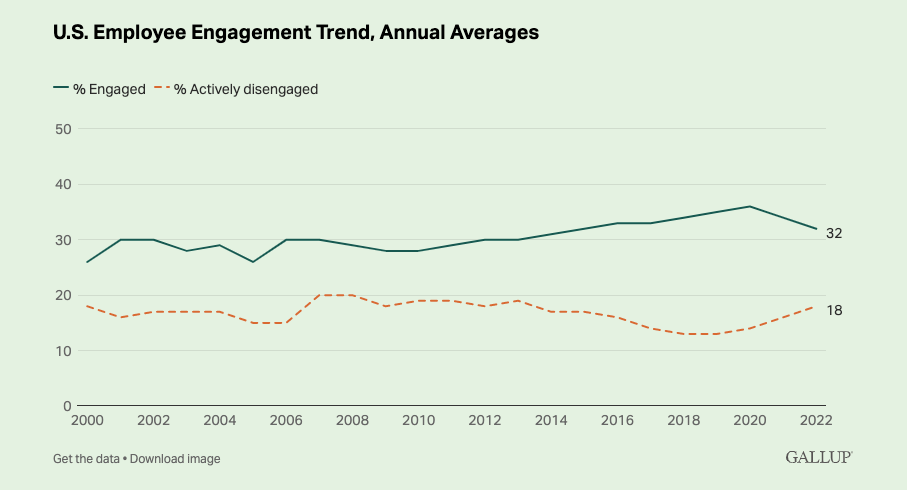Tik and Mortar, Local Ad Subsidy, Worker (Dis)Engagement

Subsidize Local Ads to Save News
A new coalition of groups called Rebuild Local News has proposed a dramatic tax-based solution to the problem of collapsing local journalism, which is having significant social and political consequences. According to the Columbia Journalism Review, "on average, two newspapers are shuttering each week." Among other recommendations, the group proposes a $250 tax credit for consumers to subscribe/donate to local news, a tax credit for SMBs to advertise in local media and a credit for hiring/retention of journalists. The advertising tax credit would provide up to $5,000 "in the first year and up to $2,500 in each of the subsequent four years to spend on advertising with local newspapers and local media." Any business with fewer than 1K employees, which is 99%+, would be eligible. Local media is defined as publishers with a majority local audience.

Our take:
- This is a better plan than asking Google and Facebook to subsidize news, as governments around the world have.
- It's unclear how much Congressional support exists for this initiative, though the bill has bi-partisan support and is content-neutral.
- A $5K tax credit for local ads would shake up local digital advertising. But publishers would need to focus "primarily" on local news.
TikTok Driving Offline Sales
To someone who's been arguing since 1999 that the internet mostly generates offline sales (now it's obvious), it's no surprise that TikTok can have a major impact on product sales in local stores. We're now in a fully hybridized shopping environment where online research/inspiration precedes offline buying most (75%+) of the time. Store visits are also a frequent prelude to e-commerce sales. As one example, local stores drive online traffic; Shopify points out, "brands get on average 37% more web traffic the quarter after opening a new physical store." Offline experiences build brand trust, which is critical to online conversions. Retailers face a daunting task, delivering against growing "hybrid consumer" expectations. As consumer spending slows, they still want engaging stores, great service and a digital experience that's (quasi)personalized. Yet retail hiring and retention challenges persist. Can tech and AI step in and deliver great consumer experiences in a cost-effective way for brands?

Our take:
- Of course, the answer is "yes and no." AI will increasingly be deployed across large retail organizations. But tech can't really replace humans.
- Service and trust, which involve humans, are keys to customer loyalty and even to first party data collection – now mandatory.
- Many retailers see tech as a way to push out costs. But they should instead focus on how tech can improve the customer experience.
Botched Layoffs = Productivity Loss
As we've discussed, there are likely two primary reasons the tech industry has laid off so many people: 1) to appease investors and 2) social contagion – others are doing it. Another may be the desire to reassert power over employees, who had "grown a little too comfortable" during the pandemic. One of the common CEO laments preceding the layoffs was declining employee productivity, which has some basis in fact. But poorly conducted layoffs don't improve productivity and they have serious consequences both for the terminated and the workplace. You often get a more disengaged workforce that may be distracted and ultimately less productive. Currently, only 32% of the US workforce is "engaged" according to Gallup, while 18% is "actively disengaged" – people acting out. What this means is that two-thirds of employees in the US are effectively not working in a committed way. This is a problem for individual companies and the US economy as a whole. And it's not really about "low performers."

Our take:
- Layoffs happen, but they can be handled transparently and ethically to minimize fallout. Not what happened in some of these cases.
- Better managed companies, with more employee loyalty are more productive. Yet most companies treat most employees as "costs."
- Management and corporate behavior are the keys to employee engagement. It's almost a cliche to argue employees are a company's best marketing channel.
Recent Analysis
- GBP Forum: Support Avoidance Strategy, by Mike Blumenthal.
Short Takes
- Yelp: New SMB growth outstrips pre-pandemic period.
- Cars for Sale: Auto dealer inventory now appearing in GBPs.
- Krystal Taing's getting started guide to Apple Business Content.
- Amid 70% ad decline, Twitter launches search ads in beta.
- Neeva adds "citation cards" (more detail/sources) to AI search results.
- BuzzFeed to start using ChatGPT to personalize/create content.
- Smartphone shipments down ~20% in Q4, Apple slightly less.
- Grocery stores embracing smartphone "scan and go" DIY checkout.
- Surviving Google Area 120 effort: a "Gen Z consumer product."
- The state of VR hardware: why it's not where we expected by now.
- Meta ad targeting starting to recover with benefit of AI (WSJ).
- Facebook's reinstatement of Trump may not matter.
- Yandex algorithm leaks, suggests Google ranking factors.
Listen to our latest podcast.

How can we make this better? Email us with suggestions and recommendations.

